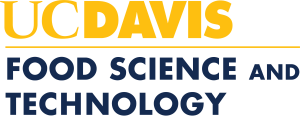A. Specific Learning Outcomes. The successful student will be able to:
Core competencies identified by IFT and matched with learning outcomes (bullets) associated with FST 109 course objectives. Bloom’s Taxonomy levels are given in parenthesis.
Food processing and engineering
Understand the basic principles and practices of cleaning and sanitation in food processing operations
- identify sanitizers, cleaning compounds and cleaning methods important in food sanitation (I knowledge)
- describe the importance of quality assurance/sanitation in the framework of the company (I knowledge)
Understand the principles that make a food product safe for consumption
- state the importance of protecting the food supply from natural and intentional microbial, chemical, and physical contamination (I knowledge)
Understand the source and variability of raw food material and their impact on food processing operations
- define quality terms, e.g., quality, nonconformity, defect, defective, acceptable quality level, rejectable quality level, variable, attribute (I knowledge)
Be able to apply the principles of Food Science to control and assure the quality of food products
- construct control charts for both variables and attributes (III application)
Applied food science
Understand government regulations required for the manufacture and sale of food products
- describe the Federal Food, Drug, and Cosmetic Act and the Code of Federal Regulations (II comprehension)
Be able to apply statistical principles to FS applications
- distinguish between the distributions used for variables and for attributes (IV analysis) • design sampling plans for both attributes and variables (V synthesis)
- evaluate net content performance (VI evaluation)
Know how to use computers to solve Food Science problems
- analyze experimental design response variables using ANOVA and regression (IV analysis)
B. Brief summary of assessment results to date.
Students demonstrate their learning through homework sets (5-6) and midterm examinations (2) and comprehensive final examination. In addition, one homework set has an associated group presentation.
EXAMPLE ASSESSMENT:
A representative midterm examination is appended (Spr 2013). The first midterm exam in FST 109 covers the following core competencies and learning outcomes:
Understand the source and variability of raw food material and their impact on food processing operations
- define quality terms, e.g., quality, nonconformity, defect, defective, acceptable quality level, rejectable quality level, variable, attribute (I knowledge)
Be able to apply the principles of Food Science to control and assure the quality of food products
- construct control charts for both variables and attributes (III application)
Student performance on Midterm 1 (40 total):
- Mean: 30.5/40
- Median 30.3
- Mode: 26.5
Student performance Course grade (% straight scale):
- Mean: 85.0
- Median 86.4
- Mode: 84.8
Instructor interpretation:
Students are meeting expectation, midterm scores and final course grades are normally distributed.
